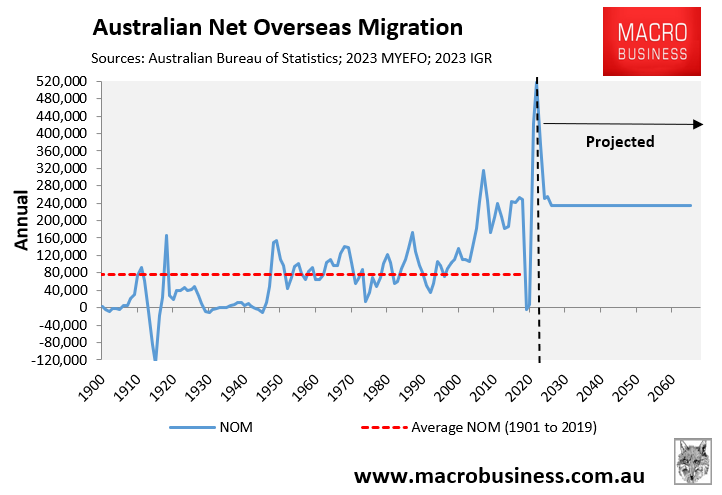Last decade saw the largest surge in high-rise apartment construction in Australia’s history, concentrated in the country’s major metropolitan cities.

This unprecedented increase in high-rise apartment complexes has been accompanied by a spike in construction defects and quality issues, including cracked foundations, water leaks, balcony defects, and flammable cladding.
Notable examples include Sydney’s Opal and Mascot Towers, which had to be evacuated due to major cracking.
These defects have cost owners and taxpayers millions in remediation costs.
Building construction lawyer, Bronwyn Weir, warned that “thousands and thousands of apartments have serious defects in their buildings”, labelling the problem “enormous”.
“We have what is now you know, a systemic failure that is quite difficult to unravel”.
“Some of these buildings could potentially be a write-off”, she warned.
Engineer Leith Dawes similarly warned that buying an off-the-plan apartment in Australia had devolved into a game of “Russian roulette”, given the myriad of construction faults that are often unreported.
The Albanese government has set a goal of building 1.2 million dwellings over five years, or 240,000 homes each year for five years in a row, with the majority of these expected to be high-density apartment buildings in our major cities.
This amount of development would be larger than anything Australia has ever achieved, given that the record single year of new home construction was only 223,600 in 2017 amid the aforementioned problematic apartment construction boom:

Bronwyn Weir has cautioned that building so many units so quickly will almost certainly result in lowered standards and another surge in defective apartment complexes.
“Australia’s chronically undersupplied housing market is heading for another development boom and apartments will lead the way”, wrote The AFR’s Michael Bleby.
“On current estimates, 50% of what will be built will have serious defects”, Weir told The AFR last month.
New analysis from Michelle May, Principal of Michelle May Buyers Agents, found that “first home buyers are the biggest victims in the building defects boom”:
“The ongoing probe into serious defects in four blocks of new apartments in the Lachlan Line’s complex at Macquarie Park adds to the litany of faulty new builds blighting the real estate market in NSW and nationwide”…
“Against the backdrop of the savage rental crisis, the young and vulnerable are in danger of swapping one set of problems for another in the form of shiny new apartments”.
“Those who choose to buy apartments do so primarily because they’re the only type of property within their reach. In their rush to get onto the property ladder buyers are getting sucked into buying lemons”…
“According to a recent NSW government strata survey, more than half of newly registered buildings since 2016 have had at least one serious defect costing an average $331,829 per building to fix”
“The research by the Strata Community Association NSW further reveals that waterproofing is the most common major defect followed by fire safety”.
“Close to one in 10 buildings also had structural and enclosure issues such as defects in the roof or the facade”.
“According to NSW Fair Trading rising complaints numbering in the thousands point to poor quality construction, loss or damage to consumers’ property, misleading or deceptive conduct, and unlicensed tradies”.
“Between 2019 and 2021, NSW Fair Trading received an average of 11,000 complaints per year on defective building work, incomplete work and unsatisfactory performance”…
“What this means is that consumers are held hostage to an industry in crisis… Many who pay a premium for new builds often end up on the hook for costly rectification work, and if they’re especially unlucky, protracted court battles”…
“Unfortunately there is no happy ending for those who have been saddled with the burden of a defective and unsaleable property. With a swathe of ruined lives left in their wake it remains to be seen if property developers will ever answer for this shameful form of property catfishing”.
“In NSW the Building Commissioner may broker a deal between owners and developers, but the government’s track record of holding developers and builders accountable doesn’t engender much hope”…
“As a buyers agent who is assessing buildings for their clients on a daily basis, I can promise you that Opal Towers and the more recent Macquarie Park scandal are only the tip of the iceberg reported in the press”.
That’s as honest and blunt an assessment as you can get.
If Australia’s building sector ramps up apartment construction to meet the demands of the country’s ballooning population, we will undoubtedly see consequences similar to those of the previous decade.

Corners will be cut, quality will suffer, construction standards will decrease, and tens of thousands of low-quality high-rise apartments will be built across our main cities.
Instead of seeking a high-rise slum future, the federal government should limit immigration to a level that is consistent with the country’s ability to provide high-quality housing and infrastructure, as well as the natural environment’s carrying capacity (including water resources).
Lower, sustainable immigration demand commensurate with pre-2005 norms (see black box in below chart) would encourage the building industry to prioritise quality over quantity in construction while also alleviating the nation’s rental crisis.

The high-rise apartment boom of last decade was an unmitigated disaster, and buyers and taxpayers are now paying the price.
Why make the same mistakes again by ramping-up development rates to accommodate insatiable immigration-driven population growth that Australians don’t want or need?

